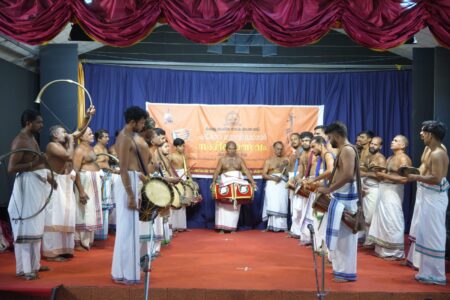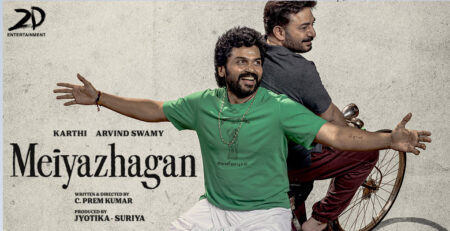The leader of the 1921 Malabar Rebellion, Variyan Kunnathu Kunjahammed Haji established a short-lived sovereign state independent of the British Empire and fought the Raj for six months through guerrilla warfare
In August 1921, when the Khilafat Movement was at its peak, British police in Malabar resorted to massive repression to quell the protests. On August 20, the police tried to arrest Vadakkevittil Muhammed, secretary of the Khilafat Committee of Eranad, which was foiled by Mappila protesters. The next day, more police arrived and arrested dozens of Khilafat volunteers and seized records at the Mambaram mosque in Tirurangadi, an important pilgrim centre for the Sunni Muslims. Rumours spread fast that the police desecrated the mosque.
In protest, a large crowd of Mappilas surrounded the Tirurangadi police station under the leadership of Ali Musaliyar. They opened fire. The Mappilas fought back. They seized the police station and killed some policemen. The collector and other senior officials fled the town. This incident is largely seen by historians as the beginning point of the Malabar riots in which the peasants of Eranadu and Valluvanadu taluks, predominantly Mappila Muslims, revolted against the British empire under the command of Ali Musaliyar, Seethi Koya Thangal and Variyan Kunnathu Kunjahammed Haji.
Haji is now in news after Malayalam film-maker Ashiq Abu and actor Prithviraj joined hands to do a biopic of the ‘King of Khilafat’, who established a “country” independent of the British rule. The cyber rightwing has unleashed a vicious campaign against Prithviraj for associating with the movie because for them Haji was a communal bigot who oversaw anti-Hindu violence during the Mappila riots. But history is more complex than these simpleton allegations.
The historical context
The Mappila riots broke off as a reaction to the British government’s suppression of the Khilafat movement. The Khilafat movement, the trigger of which was the abolition of the institution of the Caliphate after World War I, was introduced to Malabar in April 1920 when a resolution was adopted at the Malabar District Conference, held at Manjeri. The movement gained momentum with large-scale Mappila mobilisation. The socio-economic background was broader. Under British rule, the Mapilas of Malabar were largely an oppressed community. The Raj ruled the region with assistance from the Hindu aristocracy. Both viewed the Mappilas with suspicion because of their flirtation with Tipu Sultan when the Mysore ruler had established authority over Malabar and defeated British.
The Mappilas of the 19th and early 20th century were largely peasants. In 1915, according to British records, one-fifth of the land revenue in Malabar came from 86 landlords, 84 of whom were Hindus. These economic gaps, the tense relations between the Mappilas and the British that date back to the Tipu era and the trust deficit between the Mappilas and the local aristocracy had led to social outrages several times in the 19th and early 20th centuries.
In 1849, for example, the British authorities quelled a revolt by shooting down 64 Mappilas, most of them under the age of 24. In 1896, landless tenants revolted against the landlord when the latter started evacuating the tenants from the lands under the leadership of Variyan Kunnathu Kunjammad Haji, the Khilafat Haji’s father. The British government sent troops to support the landlords and quell the rebellion. The Haji senior had to flee the country to Mecca.
Malayala Rajyam
This anger that was building up against economic hardships and the British Raj led to an outburst during the Mambaram protests. After that Mappila warriors attacked government buildings and evicted British officials. They seized courts, police stations, treasuries and other government offices. Variyan Kunnathu Kunjahammed Haji, who took the leadership of the rebellion from Ali Musaliyar, mobilised thousands of warriors, some of them with military experience from the First World War, to fight the British. They destroyed railway and telephone lines, bridges and roads to stop British advances. British officials fled the rebellion-hit areas of Malappuram.
The British sent reinforcement troops, which fought Haji’s soldiers in Pookottoor, which is called the Battle of Pookottoor. The rebels fought the British troops that came in 22 lorries and inflicted major casualties through guerilla warfare. The rebels allowed the lorries to come in and then besieged and ambushed them. By late August, Manjeri, Tirurangadi, and Perinthalmanna, became independent of British influence, and Haji declared a new country, Malayala Rajyam. Haji’s government-appointed new commanders, law enforcement officials, issued currency and even passports, in a declaration of total sovereignty from the British.
In September, a general wrote a telegram to Lord Reading, the British Viceroy of India, saying “the situation is now clearly actual war, and famine, widespread devastation and prolonged rebellion can only be avoided by prompt measures”. Then the British declared martial law, deployed the ferocious Gurkha regiments and put down the rebellion ruthlessly. In the end, 2,339 rebels were killed, nearly 6,000 captured, and over 39,000 surrendered. In January, the British captured Haji, tortured him publicly and finally shot him dead on charges of killing a police inspector, collecting taxes, purchasing weapons, issuance of passports and waging war against the British empire.
Like any other rebellion, the Mappila rebellion also had many dimensions. As the rebellion was predominantly led by the Mappilas, who were Muslims, and targeted against the local rulers and collaborators of the British Empire, who were Hindu aristocrats, it was easy for the British to portray it as a Hindu-Muslim problem. Viceroy Lord Reading had condemned the “wanton and unprovoked attack on the Hindus”, forced conversions and “the outrage on Hindu women”. Those who wanted to give the rebellion a communal angle followed the British way. But a holistic understanding of the rebellion can’t overlook the class and power realities of the 20th century. It was primarily a rebellion against the British and their local aristocratic allies.




